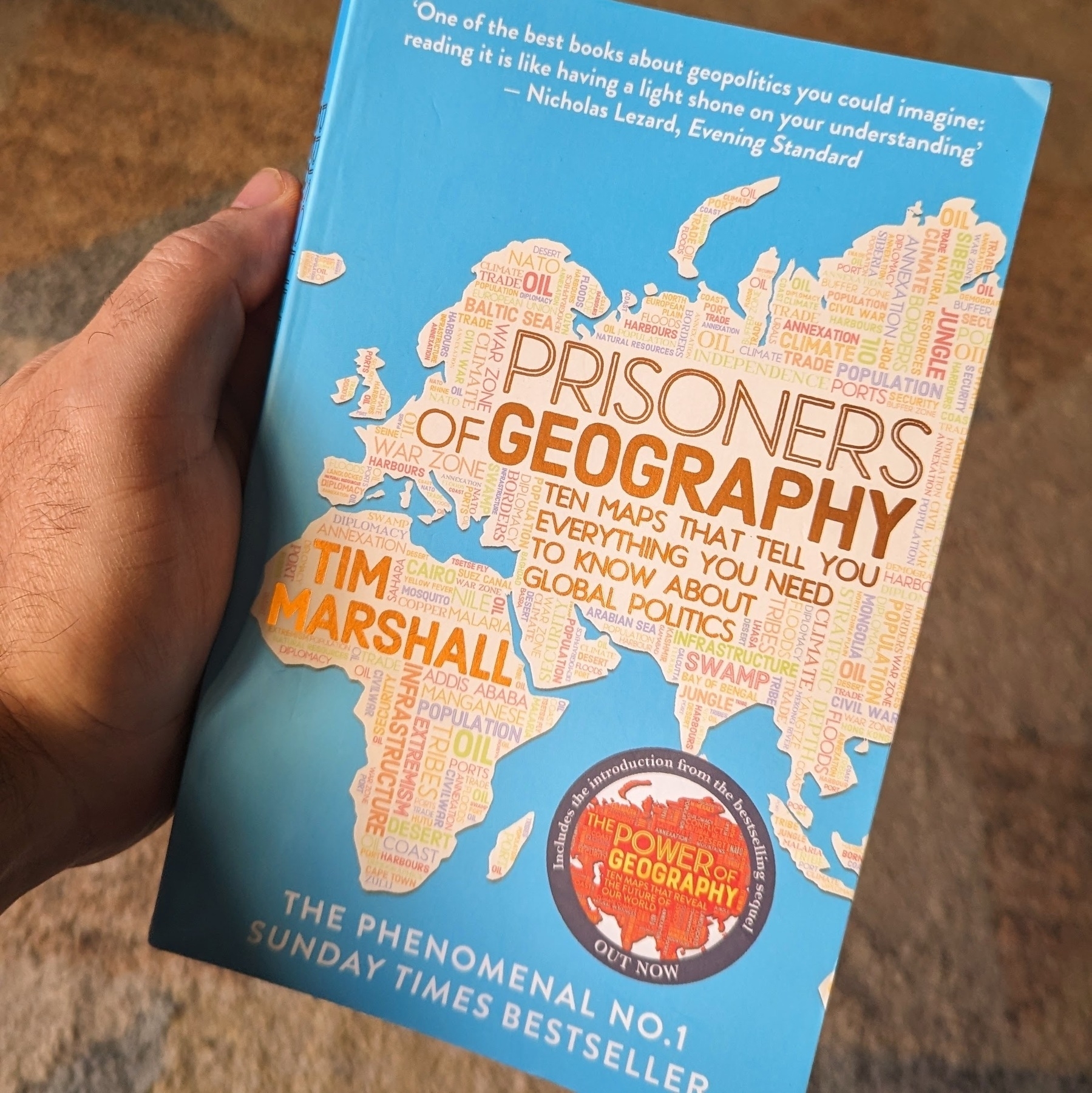Kindle
- First you have to find you Kindle serial number.
- Then you can follow this instructions to instal the DeDRM_tools plugin
- Go to Amazon’s website and sign in to your account.
- Under
Account & ListsselectContent and Devices. - Go to the
Devicestab. - Select the desired Kindle device from the list.
- Expand the window to see the serial.
Migrei do Kindle para o BookFusion e não poderia estar mais feliz
Deixar de usar o Kindle foi, em realidade, um processo relativamente longo que venho compartilhando no YouTube e no meu blog.
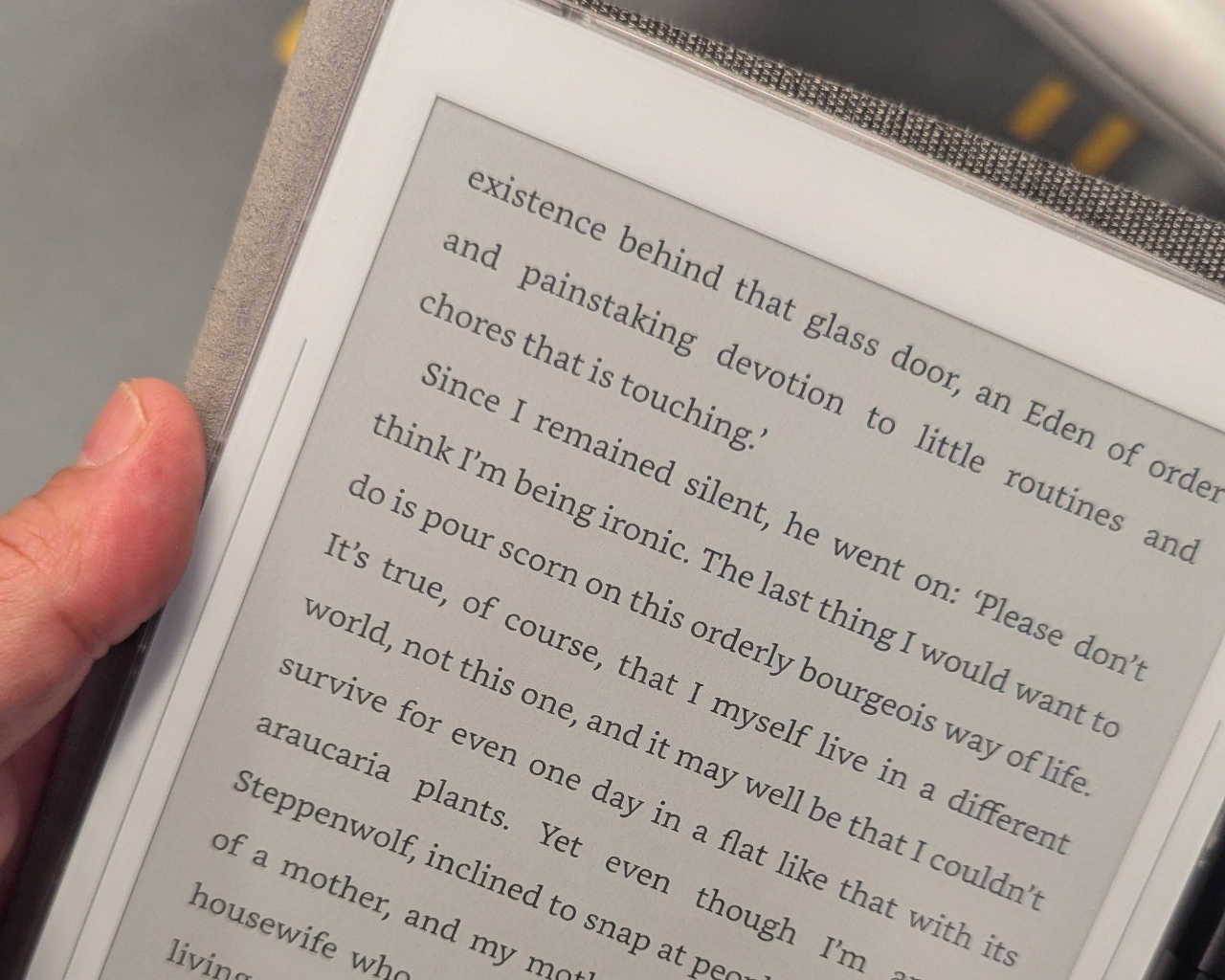
O primeiro passo foi remover o DRM dos meus livros comprados na Amazon e usar o Calibre para gerenciar minha biblioteca. Que, a propósito, passou a ser armazenada no meu cofre do Obsidian. O próximo passo foi testar alguns leitores.
Supernote
O Supernote tem um leitor de ePub e, como meus livros já estavam no Obsidian, foi só uma questão de sincronizar a pasta da biblioteca com o Supernote para abrir e ler qualquer um dos meus eBooks.
Há ainda outras vantagens. Por exemplo, posso usar a caneta e fazer anotações no próprio livro, que depois podem ser enviadas para diversas partes, até mesmo para notas do Obsidian, usando o recurso Digest.
Porém, há uma grande desvantagem. Só posso ler usando o Supernote.
BookFusion
O BookFusion é um leitor que eu já vinha testando no Android, mas que também tem aplicativos para iOS, Mac, Windows e até a web. E assim como acontece no Kindle, minhas anotações, posição de leitura, grifos, etc. são automaticamente sincronizadas entre todos os aparelhos.
Como o Supernote é, na realidade, um “Android disfarçado” ☺️, instalei o BookFusion nele também e passei a ter acesso aos livros que estou lendo, independentemente do dispositivo.
Outra vantagem são as diversas integrações. Por exemplo, há um plugin para o Calibre, que facilita o envio de livros para a nuvem do BooksFusion. Em breve publicarei um vídeo explicando como instalar e usar este recurso.
Outro vídeo, também já gravado, é sobre um plugin incrível que permite sincronizar as nossas anotações, grifos, capa, progresso do livro e mais uma infinidade de outros detalhes com o Obsidian.
Os dois vídeos serão publicados em breve.
Por ora, caso ainda não tenha assistido, sugiro o vídeo abaixo sobre como usei o Calibre para ter controle total sobre minha biblioteca.
Por que paramos de usar essas incríveis ferramentas?
De acordo com meu gerenciador de senhas, minha conta no OpenStreetMap foi criada em 2013. Com relação ao Calibre, que voltei a usar recentemente, não encontrei nenhum registro, mas lembro que decidi experimentar a ferramenta logo depois que comprei o Kindle em 2012. Anos antes, em 2005, descobri e passei a usar o Audacity para gravar e editar meu primeiro podcast.
Essas e diversas outras ferramentas daquela época eram e ainda são muito boas. Sim, elas ainda existem e são frequentemente atualizadas. Porém, ao longo dos anos, algo aconteceu conosco. Parece que fomos enganados e gradativamente nos rendemos a toda sorte de conveniências. Talvez, a melhor palavra seja enfeitiçados, afinal, quando digo que voltei a usar algumas daquelas ferramentas, sou logo rotulado como louco.
Conveniências
Analisando com atenção, fica claro que caímos numa armadilha quase sem volta. Sim, os aplicativos que a maioria de nós utiliza hoje em dia já eram e são cada vez mais convenientes e simples de usar quando comparados às incríveis ferramentas que eles substituíram. O problema é que, sem perceber, fizemos um pacto com o diabo. Estamos cada vez mais entrelaçados em uma malha que funciona como um parasita, nos sugando até o limite do possível, e a energia que nos resta serve basicamente para seguirmos adiante como verdadeiros zumbis.
Parece dramático, mas não é. O mal causado por diversos desses aplicativos vai muito além da invasão de privacidade e, mesmo sabendo disso, a maioria das pessoas segue usando cada um deles sem nenhum tipo de questionamento.
Em contrapartida, aqueles que optam por tomar uma atitude enfrentam enormes dificuldades. Imagine, por um instante, que você deseja abandonar o Google. Parece simples, porque associamos a empresa à caixa de buscas que aparece no Chrome, mas essa é a parte mais fácil de resolver.
O que a maioria não nota é que o Google está tão interconectado a tudo que você faz que pode ser que você leve anos tentando desfazer esse nó. Por exemplo, que e-mail você usará para ativar seu Android? E como fará comentários no YouTube? E para quem faz logins em sites usando a senha do Google, Apple, Facebook, etc., pode ser que não exista mais como escapar das garras dessas empresas.
Enfim, já pensou nisso e em outras coisas que te conectam a corporações que sabem absolutamente tudo a respeito da sua vida e que te induzem ao consumo desnecessário e, em alguns casos, ao extremismo?
E já não bastam os apps nos monitorando o tempo todo. Essas corporações querem sempre mais e mais. Inúmeros zumbis certamente desembolsarão uma boa quantidade de dinheiro pelo privilégio de usar um óculos que mostra os detalhes mais íntimos de suas vidas para uma corporação que, seguidas vezes, demonstrou total falta de cuidado ou respeito com nossos dados pessoais. Se você não consegue perceber que somos apenas um rebanho controlado por eles, eu te entendo. Afinal, os sedutores são muito bons no que fazem.
De volta às origens
Recentemente, falei sobre as razões que me levaram a libertar meus livros com a ajuda do Calibre. Mas ele não é o único que está de volta à minha caixa de ferramentas. Por exemplo, ontem, estimulado pela versão 6 do plugin Map View do Obsidian, voltei a explorar o OpenStreetMap, inclusive no meu telefone, com a ajuda do Organic Maps. Como mostro no vídeo abaixo, rotas criadas em várias dessas incríveis ferramentas que resistiram ao tempo podem ser facilmente integradas ao Obsidian.
Sou o primeiro a admitir que fazer as coisas dessa forma não é mágico como a Apple gosta de pregar, mas não é nada que causará sofrimento. Ao contrário, em muitos casos é até prazeroso porque significa estar presente, agindo com atenção e intenção.
Quando procuro por alternativas, não é raro encontrar as respostas no passado, mas há, sim, muitos aplicativos modernos sendo criados sem foco na exploração do usuário. Por exemplo, ontem mesmo, comecei a experimentar o Antennapod para ouvir meus podcasts. Enfim, existe uma comunidade incrível que está fazendo de tudo para termos opções. É quase como se vivêssemos nos dois mundos do filme Matrix. O criado pelas grandes corporações e o dos rebeldes que tentam abrir os olhos dos dominados. Há alguns anos, escolhi a pílula vermelha e, como diria Einstein, “A mente que se abre a uma nova ideia jamais voltará ao seu tamanho original”.
Não é um caminho fácil, mas não vejo razão para radicalismos. Acredito que se fizermos as coisas gradualmente, quando menos esperarmos, estaremos bem próximos de uma relação muito mais saudável com serviços e ferramentas alternativos, que também funcionam muito bem para tornar nossas vidas mais convenientes.
Já estou bem adiantado nessa jornada, mas não se trata de uma corrida. Há espaço para todos e, definitivamente, podemos vencer enquanto sociedade se caminharmos em direção ao mais saudável.
Uma mente em conflito. Duas línguas e uma montanha de livros—em ambas as línguas.
Comecei a ser alfabetizado em inglês quando morávamos em Boston por conta dos estudos do meu pai. Naquele momento, eu mal sabia onde estava e, evidentemente, não passou pela minha cabeça que aquela bela cidade me abrigaria algumas outras vezes no futuro.
De volta ao Rio de Janeiro, começou outra alfabetização e uma confusão mental que carrego comigo até hoje. Por exemplo, às vezes escrevo um texto inteiro em português e só lá pela terceira leitura de revisão é que percebo uma ou outra palavra em inglês. Esse bug mental é algo que eu adoraria capturar em tempo real, mas meu cérebro parece mais esperto que ele mesmo e camufla o momento da permuta brilhantemente.
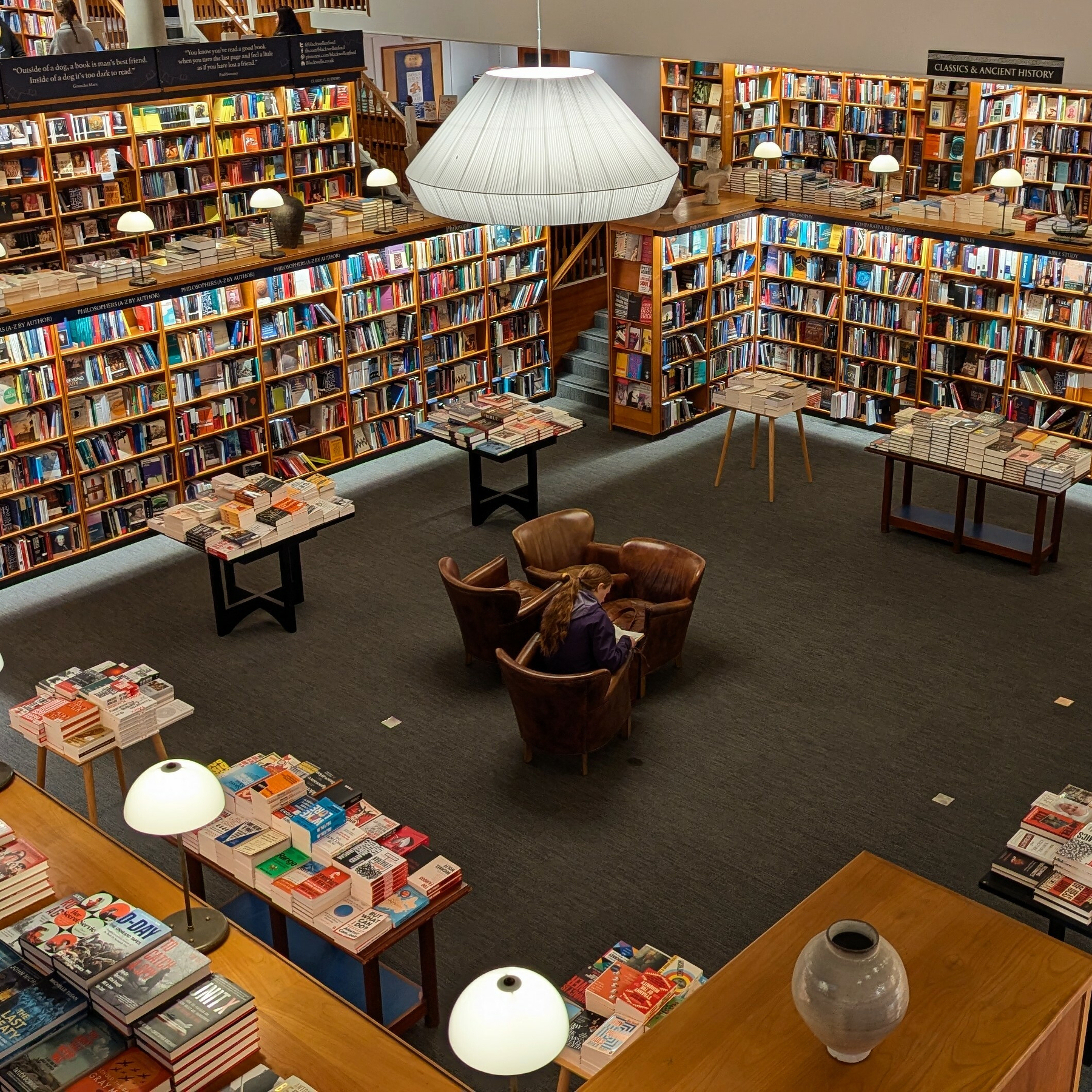 *Livraria Blackwell's em Oxford.*
*Livraria Blackwell's em Oxford.*
A propósito, o mesmo acontece quando falo e, se for algo muito sutil, não regravo aquela parte do vídeo. Portanto, se você prestar muita atenção, notará que às vezes começo a primeira sílaba de uma palavra em inglês, mas logo percebo e volto para o português.
O problema mais sério, entretanto, está ligado às complicações usuais dessa nossa língua tão confusa. Entendo que quando aprendemos a escrever é normal ficar em dúvida entre o “ss” ou “ç”, por exemplo. Mas no meu caso, o caos reinava absoluto, com a confusão se estendendo ao “c” e até o “s”. Que, diga-se de passagem, às vezes tem uma crise de identidade achando que é um “z”. Assentos, digo, acentos, melhor nem falarmos sobre isto.
Com o tempo, o problema passou a me incomodar cada vez mais na escola. “Como é que as outras pessoas sabem quando usar as letras certas e eu não?” O mais estranho é que minha irmã também foi para a escola nos EUA e não tinha os mesmos problemas que eu. Uma vez perguntei como ela sabia que letra usar e a resposta “não sei como sei, só sei”, só serviu para criar em mim ainda mais desconforto mental.
Hoje em dia, acredito que a nossa diferença de idade foi suficiente para estarmos expostos a momentos distintos nas escolas nos EUA e no Brasil. Isso talvez explique a situação, já que ela nunca passou pelo processo de alfabetização nos EUA.
Enfim, quando na adolescência perguntei para uma amiga o mesmo, a resposta foi direta: “acho que você precisa ler mais”. Pensei sobre o assunto e achei que fazia sentido. Seria como aprender por força bruta. De tanto ver palavras, eu provavelmente atingiria o nível “só sei que sei” da minha irmã. Dito e feito. Outro dia, estava num café dizendo à dona que eu não sabia explicar a razão, mas achava que a vírgula que ele colocou numa placa não deveria estar ali.
Sempre gostei de ler, mas naquele dia resolvi mergulhar na maior aventura literária da minha vida. De livros a bulas de remédios. Se algo contendo letras aparecesse na minha frente, eu começava a ler. Aliás, é um hábito que carrego comigo até hoje. Leio tudo o tempo todo.
Porém, para não destruir o que eu já sabia de inglês, decidi que, se eu pudesse comprar um livro no original em inglês, eu faria isso. Por outro lado, autores brasileiros e os que não fossem de países cuja língua era o inglês, como Hermann Hesse, Gustave Flaubert, etc., eu leria em português. Obviamente.
Em pouco tempo, meu quarto de adolescente foi transformado numa biblioteca. Havia livros por toda parte. A quantidade era tamanha que foi provavelmente por conta deles que minha alergia piorou tanto. A decisão não foi fácil, mas depois de tantas consultas médicas, estava claro que eu precisava me livrar das minhas preciosidades. O que mais me doeu deixar partir foi a coleção completa do meu autor preferido, Fernando Sabino. Não foi nada fácil encontrar alguns dos livros que já não eram mais impressos e, além de adorar o estilo de escrita dele, chegamos a trocar algumas cartas. Enfim, foi triste me desfazer daquelas joias.
Do papel ao digital
E é aqui que duas de minhas paixões se cruzam. Meu primeiro eReader não foi um Kindle, nem o app da Amazon, foi o Palm. Havia um leitor bastante rudimentar, o PalmReader, onde era possível ler os livros em domínio público disponíveis para download no site Project Gutenberg. E foi assim, naquela telinha mínima, que li clássicos como “1984”. Todos em inglês.
Algum tempo depois, em 2000, surgiu o serviço Mobipocket, onde comprei meu primeiro livro eletrônico, Piloting Palm. Em 2005, a empresa foi adquirida pela Amazon e, ironicamente, o Piloting Palm nunca foi lançado em formato Kindle.
O aplicativo Mobipocket usava o formato .mobi, que foi adotado por diversos livros eletrônicos vendidos na Amazon. Porém, como havia uma diferença entre o DRM usado nos livros de ambas as lojas, nunca pude ler minha cópia digital do Piloting Palm no Kindle.
Lembro de ter ficado chateado com a situação, mas tenho certeza de que não percebi que aquilo já era o embrião de um enorme inconveniente que afeta amantes da literatura hoje em dia. Aliás, é assim, por meio de soluções extremamente convenientes e simples de usar, que muitas empresas nos prendem a seus ecossistemas. É como estar em uma prisão ao ar livre. Parece ser cada vez mais difícil fazer o que desejamos, apesar de estarmos aparentemente livres. A Apple é um exemplo clássico, mas não é a única.
Algumas décadas depois, finalmente resolvi o meu problema, mas, a esta altura, minha cópia digital do Piloting Palm já havia desaparecido no tempo. Abordo esse tema em mais detalhes no vídeo abaixo.
A solução técnica vem de um aplicativo chamado Calibre. Com ele é possível remover a proteção conhecida como DRM que impede que livros eletrônicos sejam lidos em aplicativos diferentes dos ligados à empresa onde foram comprados. No vídeo abaixo, demonstro como é possível fazer isso.
Minha biblioteca digital está finalmente livre e reside em uma pasta do Obsidian. Em outras palavras, está sendo sincronizada com meus outros dispositivos e, ao mesmo tempo, faz parte das rotinas regulares de backup do meu computador.
Essa foi a última etapa do meu projeto Homem das Cavernas Digital, o que significa que agora tenho controle total sobre todo meu conteúdo digital. Aliás, que fique bem claro que não concordo com pirataria e não alimento essa prática. A única razão pela qual removi o DRM dos meus livros foi para que eu pudesse ter escolha. Em outras palavras, quero poder decidir onde ler os livros que comprei.
Seus livros Kindle NÃO são seus!
Não concordo com as práticas das grandes corporações no que se refere à comercialização de eBooks, mas não concordo com pirataria e de forma alguma quero prejudicar o autor. Em outras palavras, estou às voltas com mais um dilema moral.
Links
Estou editando dois vídeos complementares sobre o assunto #DRM. Em um deles, explico como usar o #Calibre para remover DRM de eBooks #Kindle e #Kobo e como mantenho minha biblioteca no #Obsidian. Este é um vídeo mais técnico que publicarei no canal vladcamposTV.
Há um outro em que explico minhas razões para fazer isto e qual a minha opinião a respeito de DRM. Este segundo, como é em formato de “conversa”, vai para o canal VCP 2.0 e também para o podcast.
Ambos estão gravados e se tudo correr bem, serão publicados amanhã. A propósito, estou cada vez mais contente com a decisão de separar diferentes formatos de conteúdo em dois canais.
Leviathan Wakes
I don’t remember the last time I couldn’t stop reading a book. Better yet, when I was reading Leviathan Wakes, the first book in The Expanse series, it was comforting to know that I would be able to keep enjoying more stories set in that universe.
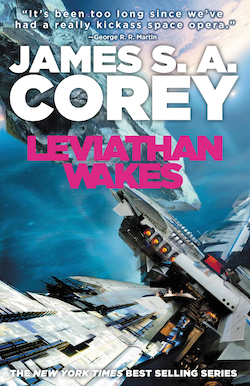
I developed a more in-depth understanding of the characters, and the most delightful aspect of this was that it occurred naturally as I was enveloped in the adventure narrative. It’s time to find out if the next books are as good as this one. However, if you like the TV show, you should probably read at least this first book.
I purchased it in paperback while on a recent trip to Ireland, but I chose to go digital for the second book, Calvin’s War. And I’m not using a Kindle or Kobo device or apps. This reading is happening in my Supernote.
I freed my Kindle library and have it synchronized with all my devices
First, I converted the books to ePub using Calibre. Next, they joined my Timeline System in Obsidian for automatic synchronization across all devices, Supernote included.
Like many other modern conveniences, the Kindle ecosystem is built to keep us locked in. As you know, I’ve been taking down walls around digital goods I won, and now it’s time to do it with my books. This project has been on my list for a long time, but it was a recent feature removal from Amazon that motivated me to finally pull the trigger.
We used to be able to go to Amazon.com and download our Kindle books, but that’s not possible anymore. A while ago, when Amazon announced the policy change, I downloaded all my books. If you haven’t done that, I believe you can still have access to them by connecting your Kindle to a computer and manually coping the books.
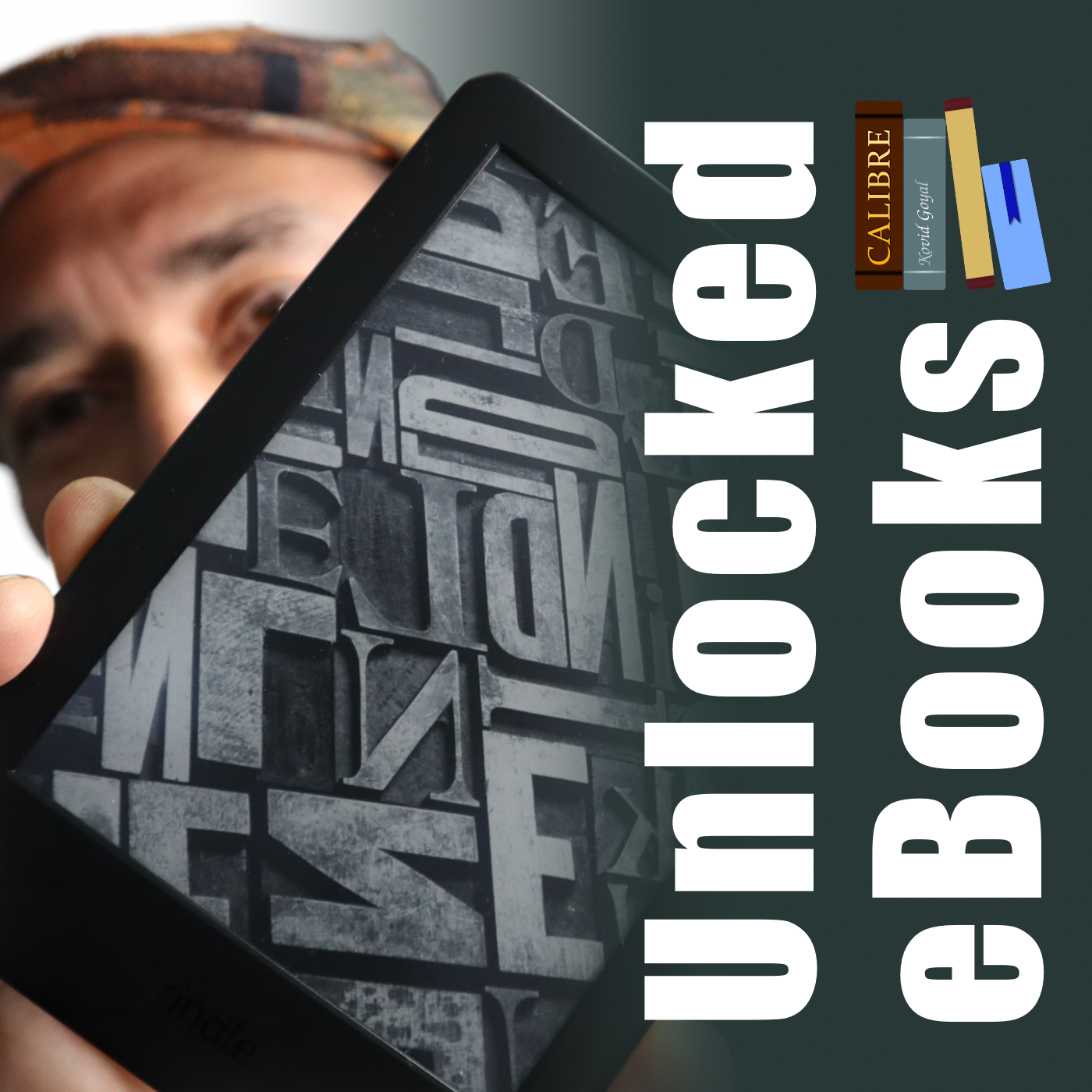
But having the books is just part of the process, as the majority of them are linked to your account via what’s called DRM. Additionally, Amazon uses a proprietary format instead of ePub, which is more widely adopted by e-book readers. In other words, it’s like having your books locked in a box that is locked in another box.
Calibre is the master key that can help us with all of these locks. Additionally, it works as a library management software, keeping all the books in a folder on our computer. That’s just perfect for the Digital Caveman project, right?
When you are first installing the app, it will suggest a folder for your library, but you can change it to what better suits you. In my case, I created a new Static Container (folder) called ‘eBooks’. And because the files in my Timeline System structure synchronize with multiple devices, my library is now widely available. But I’m getting ahead of myself.
As a tip, you can also move the library to a different folder in the future. Just click on the ‘eBooks’ button on the toolbar to choose a new location.
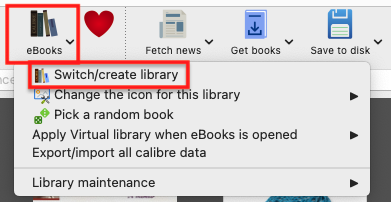
Next, we need to prepare Calibre to be able to remove the DRM from our books. This is done in two parts. First, we need to install and set up a plugin. It’s only after doing this that we’ll be able to tell Calibre to remove the DRM and convert the books to ePub.
Preparing Calibre
Add the serial number to the box and that’s it.
Converting to ePub
With all the above done, go to Calibre’s main window and click on the ‘Add books’ buttons. Select one or more books, and they will be added to your library’s folder.
Next, select one or more books in the list and click on the ‘Convert books’ option. You’ll see a new window with countless details that you can tweak on each book. There are even several formats available in addition to ePub, which is the pre-selected on. In my case, I kept everything as it was and clicked on the button to convert.
The Supernote
To understand how my books are being automatically sent to my Supernote, I suggest watching the video below.
But remember, the books are in my Obsidian Vault. And looking at how Calibre creates folders for each author, I’m already having insights about making those folders somehow connected to other content I have in Obsidian. Especially the ‘Knowledge Base’ notes, which share a strong relationship with the books I read. And that’s one of the reasons I chose to set the ‘eBooks’ folder as a Static Container.
The Digital Caveman Project
There are plenty of details I still would like to adjust, but all the digital content I create and own is now local first and free from walled gardens. In other words, 100% under my control.
In addition to my notes and website being created in Obsidian, my music, photos, now my books, every single file I use for my personal life and work, and even my passwords, are on my computer first. I even have my own ‘cloud’ system and a backup strategy.
🪨 I did it!
How to instal the DeDRM_tools plugin
Download the DeDRM_tools plugin, unzip the folder, and set it apart. Next, go to the Preferences under the Calibre menu option. At the bottom of the page, you’ll see the Plugins button. Click on it. Next, click on the button Load plugin from file.
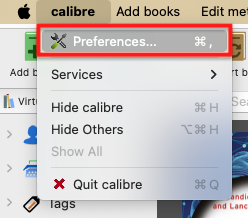
Navigate to the DeDRM_tools folder on your computer, find and select the DeDRM_plugin.zip file. Click on Open, and you’ll see a dialog box asking if you are sure. Click on Yes and in the next dialog box, also on OK.
Now we need to provide the plugin with your Kindle serial number. There are many plugins already installed, so if, for some reason, you can’t see the one we just installed, simply search for DeDRM. Select it and click on the Customize Plugins button and then on Kindle eink ebooks.
You will be asked for your Kindle Serial Number. Add the serial number to the box, and that’s it.
How to find Kindle's serial number
How I listen to books on my Supernote Nomad
Remember my rant about the microSD expansion on the Supernote? It appears that it’s not as limited as I thought.
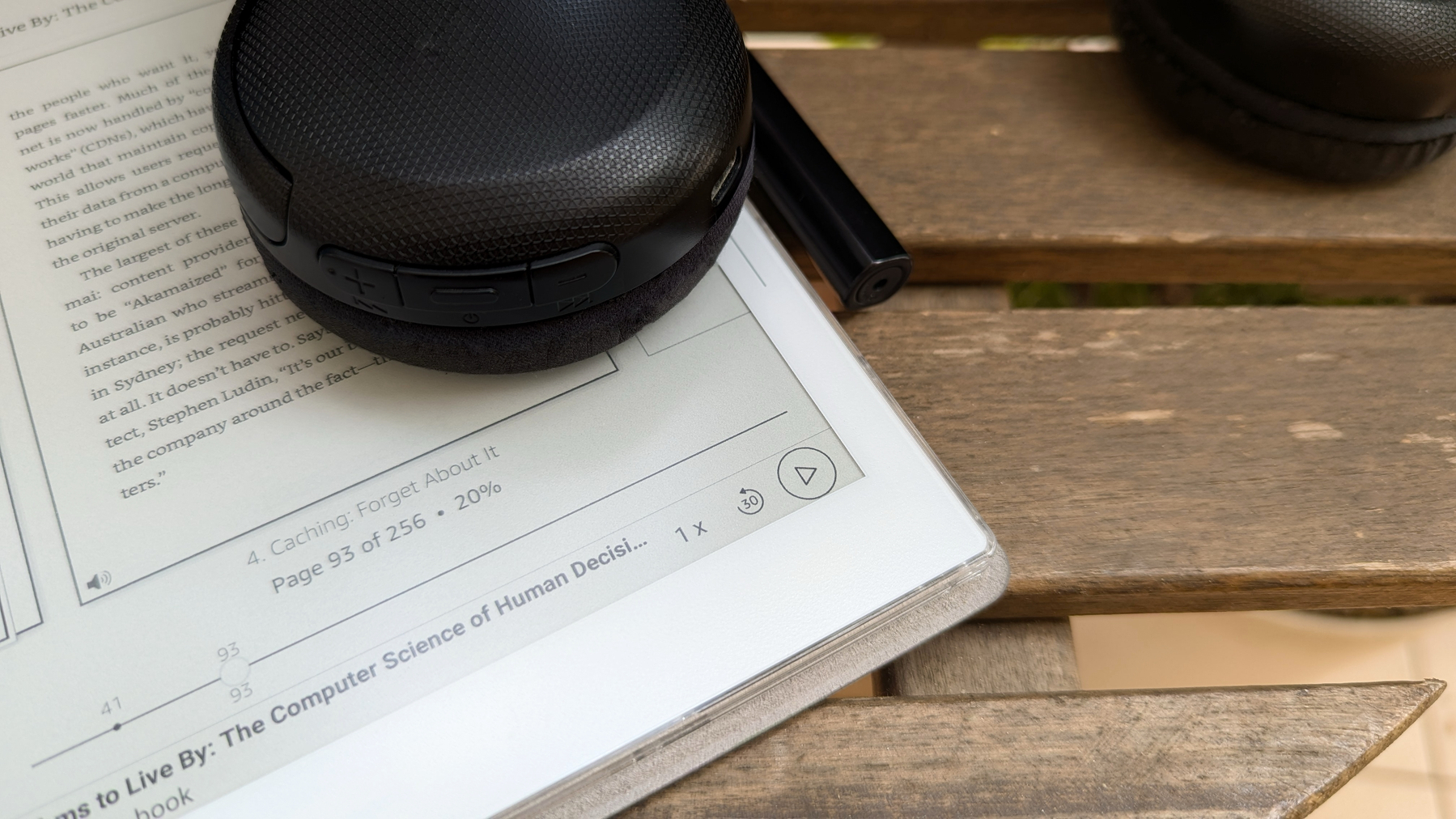
Yesterday, I was feeling a bit frustrated, as I couldn’t figure out the full potential of using a microSD card on my Supernote Nomad (A6X2). But today, I stumbled upon something that started to change my perspective.
It turns out the Amazon Kindle app has a hidden gem: the setting that lets you save all your books directly to the expansion card on your phone also exists on the Supernote.
To activate it, simply open the Kindle app, go to More, and then Settings. There, you’ll find the option Download to SD Card.

After enabling this setting, I checked the card and found a new Android folder that looked remarkably similar to the one on my phone. That’s interesting to learn.
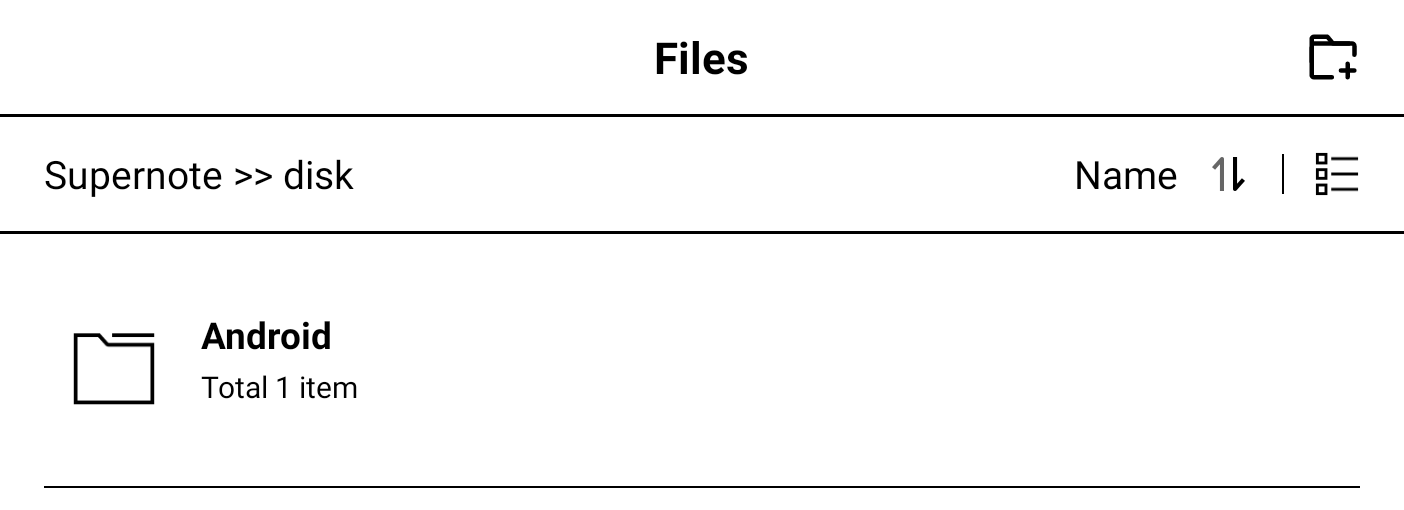
Finally, I went to the Supernote storage settings and confirmed that the card was indeed being used. But there`s more!
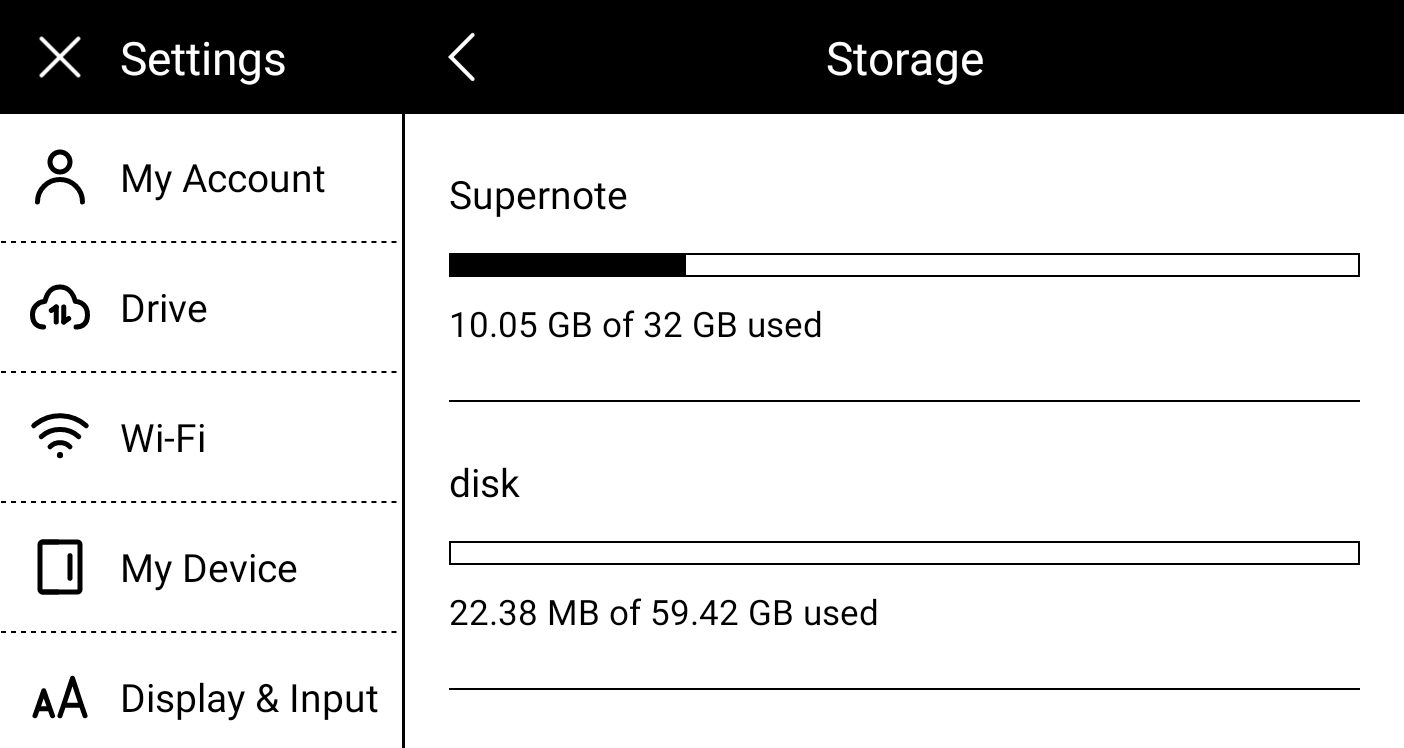
Now that the books are being stored on the card, I decided it would be worth it to try downloading and check if I could listen to audiobooks. There’s no headphone jack on the Supernote, but it is possible to connect a headset via Bluetooth, and I had to try this. By the way, there’s also an option in the settings to auto-download your audiobooks.

And the answer is yes, it is possible to listen to audiobooks. That microSD card is starting to look more promising now.
The first time I used an e-Ink screen device to write an article.
I’m torn. Part of me wants to make this work because that screen is so good, but at the same time, the writing experience is not as convenient as opening my MacBook Air and starting to type.
My obsession with how simple it is to sit down anywhere, open a lid, and start typing began with an 11-inch MacBook Air back in 2012. I loved that computer. It traveled with me around the globe, allowing me to write books, articles, and blog posts wherever I was. Furthermore, its size was perfect for trains and plane tray tables.
It was eventually replaced by the M1 Air, which is a little bigger, but I still carry it with me to far too many places. Regarding the small screen of both computers, it was never a problem since I always had an external display at my office.
And, yes, I have tried an iPad, but, regardless of what Apple claims, that’s not a computer. Mostly because of iPadOS limitation. Anyway, I quickly stopped using it because, more often than not, I had to also pack my laptop for the non-writing work. So, why bring two devices with me if I can do a much better job with just the MacBook Air.
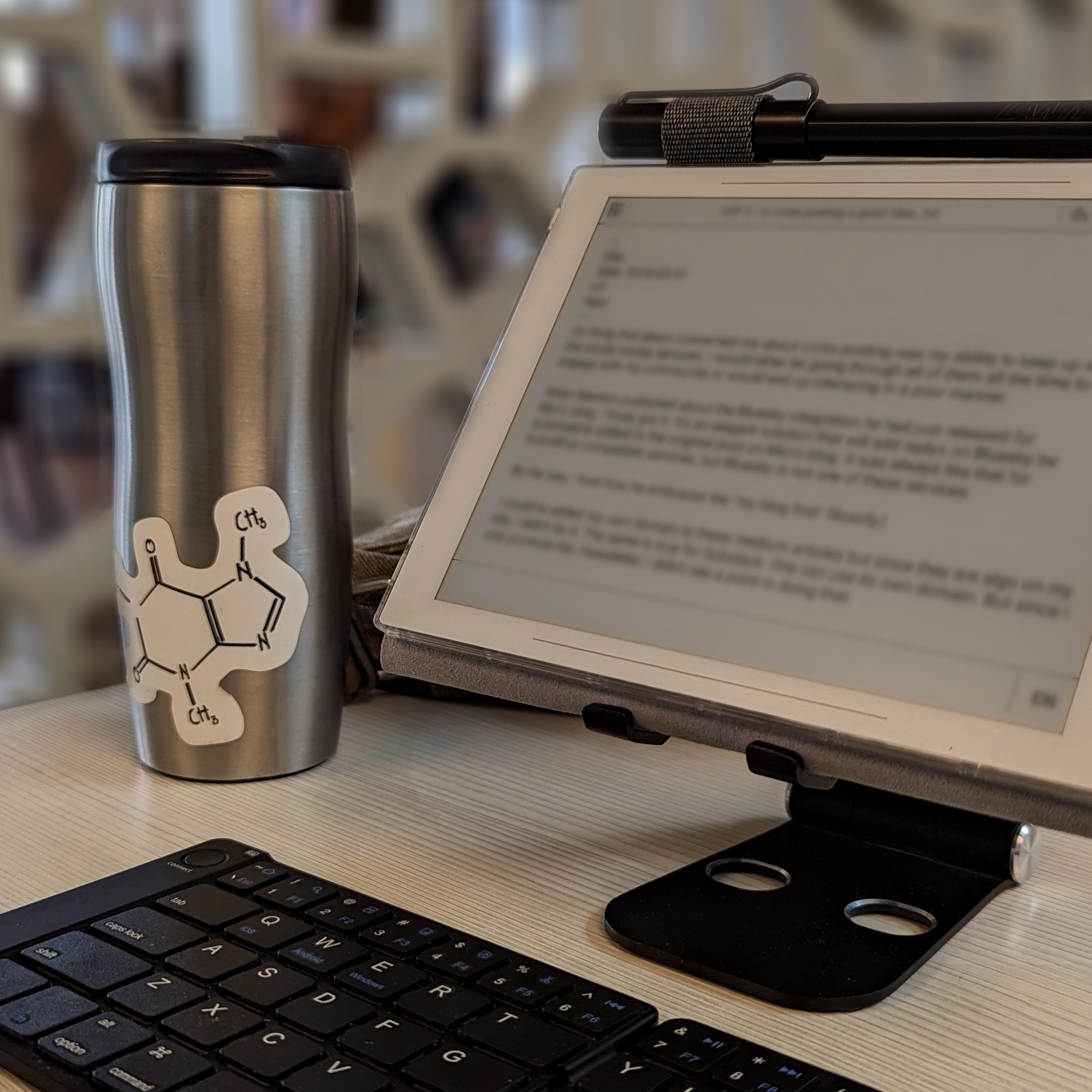
Enters the Supernote
The Nomad, which is the one I have, is a little bigger than a Kindle, but much smaller and thinner than an iPad. It has an e-Ink screen and the Kindle app. And talking about reading, I love my Kindle and keep it in my bag all the time. Can you see where I’m going with this? But before that, let’s talk about my first attempt to organize my notes in the Supernote (video below).
I’m trying my best to document and share my learning process, but inevitably the videos about the Supernote will always be a few days and many features behind my real-life experience. So, what I showed in the video above has already evolved to a system that I’m thrilled with.
I’m easily capturing and organizing my ideas like never before. There’s almost no friction and, of course, I’ll publish a new video about it in the following days. Anyway, what I’m trying to say is that with the above solved, I thought I could probably give the Nomad an extra job.
Yesterday I packed a generic foldable Bluetooth keyboard and a tablet stand and went to a coffee shop. Writers tend to spend far too much time looking at screens, and that combined with the time I spend editing videos has taken a toll on my eyes. So, the first thing I felt when using the Supernote to write was an immense relief. The comfort is almost indescribable. What a gorgeous screen to look at.
However, before that, I had grabbed the Supernote pen, navigated to the article, unfolded a keyboard, unfolded a stand, and only then start typing. Arguably, there are also many steps when using a laptop, but it is a single piece of equipment and there’s no need to lift the hands off the keyboard and trackpad to get to the app and start writing.
Extra gear and fewer features
Using the Kindle app on the iPad was never an option because of the screen, but I can now leave my beloved Kindle behind, and make room for the Supernote.
However, if my goal is to write long texts when away from my home or office, I’ll have to always carry that keyboard and stand with me. I’ll also miss some useful tools, like LanguageTool. Not to mention that I have already expressed my negative thoughts about devices like this.
Fortunately, I’m already old enough to understand that only the fool never changes their minds. Maybe less strain on my eyes and a more mindful writing experience is what I need for a while.
The only way to know it for sure is by trying, and if this extra job I’m giving the Supernote ends up failing, I’ll be fine with it. Like I mentioned above, this lovely device has already become my quick go-to notepad for jotting down and organizing ideas. In other words, it’s already in my everyday bag, coming with me everywhere.
A Supernote is expected to arrive at my office on Monday.
Some people keep journals, I jot notes down multiple times a day. Together, they form a digital timeline I’ve been crafting since 1999, when I picked up a Palm IIIx. Now, a Supernote is being added to my note-taking workflow.
I first learned about it on cam shand’s YouTube channel, and immediately noticed it checks so many boxes on what I had in mind for a device like this.
Firstly, it is user-serviceable, and as you already know, I like to make, adapt, and fix things myself. Then, there’s the e-Ink screen, the type I prefer on my devices. They not only make reading comfortable, they check another box on my list: battery life. Like my watch and Kindle, I’m expecting the Supernote’s battery to last for a long time between charges.
Have I told you there’s no need to charge the stylus?
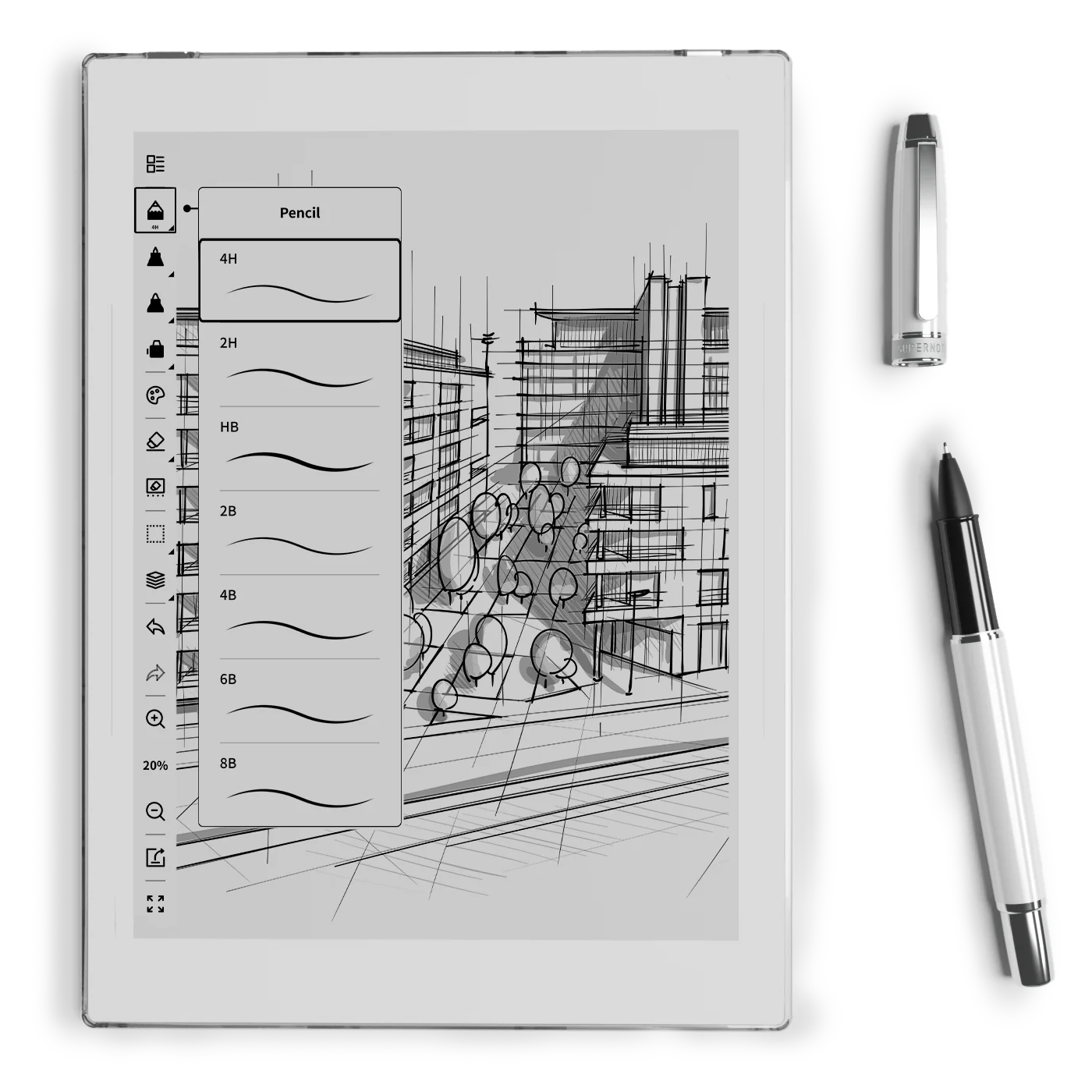
I have many ideas I would like to explore and numerous experimental projects I plan to do, such as connecting it to Obsidian. I’m not sure how many of them I will be able to accomplish, but you are joining me on this journey. We’re going to learn how to use it as we creatively push it to its limits.
If this is a topic you are interested in, please subscribe to my YouTube channel and stay tuned. The first video about the Supernote will be released next week.
Have a wonderful weekend!
Prisoners of Geography
The first book of 2024. I still prefer eBooks for a multitude of reasons, but bookstores and used bookstores are still the kings of discoverability. I found Prisoners of Geography by Tim Marshall in a random store during my last trip and had already read half of it flying back home.
